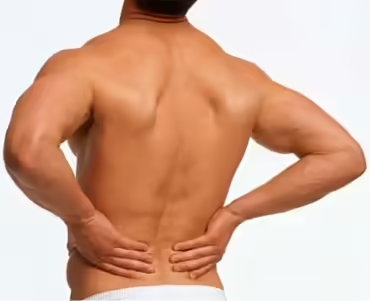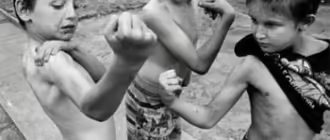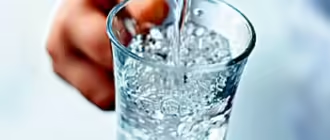Most, if not all, gym- goers have experienced the phenomenon of aching muscles when you try to work them, the day after or the day after a workout. This type of pain is called post-workout pain syndrome and is associated with the fact that your muscles have entered the phase of active recovery and muscle fiber construction. Many believe that if muscles ache the next day or the day after, this in itself indicates that the training session was quite active and correct, and your muscles were provided with a quality boost for growth. In fact, post-workout pain, or as it is commonly called, muscle soreness, occurs as a result of an atypical or, in other words, unusual load that the athlete performed. That is, even when performing aerobic exercises that are unusual for you, the effect of which on muscle growth is very weak, we can earn quite noticeable muscle soreness. Consequently, muscle soreness is not always a sign of a quality workout.
By the way, many people mistakenly believe that since it is time for the next workout and the muscle soreness has not yet passed, they still need to go and bomb the muscle that still hurts. For successful muscle growth, this very mass must first recover, and only then be subjected to repeated stimulation. And what is meant by recovery? If we describe it very roughly, it is the healing of painful microtraumas and the growth of additional fibers so that the next time, when receiving the same load that forced the muscle to recover, there are fewer microdamages. Therefore, without allowing the body to fully restore the muscle fibers damaged during the previous workout and subjecting them to new loads, we not only do not stimulate the muscles to grow, but also postpone the beginning of this growth, at least until the next moment of complete recovery.
In order to reduce post-workout pain, or muscle soreness, you can follow the following recommendations.
– Before starting a workout, always do a quality warm-up, especially with an emphasis on those muscles that will be subjected to intense loads.
– After each exercise, you should always stretch the muscle being trained.
– At the end of the workout, you need to do a so-called cool-down, that is, load the muscles you have worked with multi-repetition exercises to pump more blood through them and drive in as many nutrients as possible. It is also useful to do this on non-training days or during training, when this muscle group should rest and recover. After the workout, it is highly advisable to take a hot shower.
– Another good remedy is massage.
There is another type of muscle pain directly related to training and occurring during exercise. This is the so-called burning. Burning occurs when a relatively large amount of a substance called lactic acid accumulates in the muscle by the end of the approach – the result of metabolic processes occurring in the muscle during intense and hard work. There is nothing dangerous in this pain and it can indirectly indicate that the exercise for stimulating muscle growth was performed in the correct manner. This is good pain! This is what Schwarzenegger meant when he said his famous no pain no gain.
The third and perhaps the most dangerous type of pain associated with training is pain resulting from an injury sustained during training. It is impossible to describe in general terms the processes that can cause pain in a couple of paragraphs, so I will focus on general definitions.
Most often, an athlete , carried away by his own successes in progression, begins to think that such an athlete can do anything and any mountain is within his reach. In fact, you need to constantly restrain yourself from increasing the load. This is especially true for guys who train with the use of various doping drugs. At the beginning of the next, called in the bodybuilding environment, mass-gaining period, it begins to seem that the shells just fly up to him and you want to throw more and more on the barbell. Guys, this is the path to injury. You should not blindly chase the weights. As a result of the increased load on the ligaments and tendons, they cannot withstand and everything comes down to injury. And then the athlete does not continue to progress slowly and confidently for the rest of the mass-gaining course, but is busy healing the received battle wound. Try to restrain your ambitions and gradually increase the working weights. In any case, you do not need to try to set a record at every training session. Sooner or later you yourself will come to this, but it will be worse if you understand and accept what is said at the cost of your own injuries.
Signs of developing injury may be the slightest painful or even uncomfortable sensations in the joint or muscles during the exercise. It happens that nothing seems to hurt during the workout itself. While the muscle and ligament are warmed up, the pain is much less. But if you notice unpleasant sensations on a non-training day, the muscle should be left alone for at least one, or even two workouts specialized specifically on this muscle. That is, if after working on the biceps your elbow tendons or ligaments hurt the next day, you are strongly advised to cancel any pull-ups for a while and categorically replace the next biceps workout with something else.
To avoid injuries, it is necessary, especially on days with heavy training, to strictly and unconditionally follow the following rules.
A quality warm-up is a must, including the whole body, not just the muscle group being trained.
The transition from warm-up weights to working weights should be very smooth. That is, there should be 5-6 warm-up approaches, and if the weight is very large, then all 10. The last warm-up approach should be performed with a weight almost equal to the working weight, for 1 repetition. This will not tire you out, but will allow the nervous system to properly tune in to hard work. At the end of the workout, stretch and cool down.
Take care of yourself.






